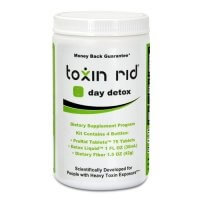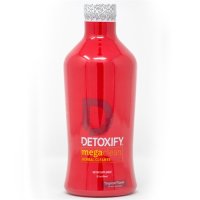Overview: How long does it take to get weed out of your system for a drug test?
As a general rule, THC stays in your body for roughly 30 days. For up to 90 days, it will be noticeable in hair
Marijuana detection time chart
| How long does it take to get THC out of your system: abstain for the following detection windows | |||||
| Test Type | Saliva | Blood | Urine | Hair | Sweat |
| Infrequent user: how long does a single joint stay in your system | Approximately 24 hours | 1-2 days | 7 days | Up to 90 days undetectable | 1 to 4 weeks |
| Moderate use: twice per week, herbal weed smoke of medium concentrations | 1 to 3 days | 3 days | 10-18 days | 90 days | 1 to 4 weeks |
| Daily use of herbal and/or edibles and concentrates | 3 days after ceasing use | 7 days | 30 to 48 days | 90 days | 1 to 4 weeks |
How THC is metabolized
In the body, THC will be metabolized into 11-OH-THC. This metabolite is still an active drug. It will then be further metabolized into 11-nor-9-carboxy-THC or THC-COOH. This metabolite will hide out in the fat cells and be slowly released into the bloodstream. From there it will reach the urine and small amounts (undetectable) will leech into the saliva. The type of THC tested for by saliva tests is the unmetabolized form that comes directly from smoking. Further, metabolized THC will go from the bloodstream into the sweat and hair.

Factors that affect how long marijuana stays in your system
Smoking frequency
If you smoked just one joint one time, it may be out of your system as soon as 24 hours. If you take powerful edibles daily, you would want to abstain for as long as one month to have a chance of testing clean.
THC content and route of administration
The THC dose will be slower but more concentrated if you eat your cannabis. Eating causes urine and blood levels to rise later than smoking, but more severely. When you smoke potent concentrates like dabs, your THC levels will surge quickly, but it will also leave your body quickly.
Body Fat
Because THC is stored in adipose tissue, if you have a large number of fat cells, you may be able to store more THC. Additionally, if you suddenly begin burning a lot of fat, you may experience an increase in THC metabolites in your blood and urine.
 | Our best choice Toxin Rid |
| |
 | Mega Clean + PreCleanse Pills |
|
Types of drug tests
Urine: How long does it take the pot to leave the system for a urine drug test?

THC is excreted in the urine for up to 30 days. Cannabis leaves your urine at a slower rate than saliva, which is equal to the rate at which it leaves the blood, but faster than hair. THC pouring from fat cells, into the circulation, and ultimately into the urine makes cannabis identifiable in urine. This will be the case as long as the pee is concentrated enough for THCCOOH, the primary THC metabolite in urine, to be detected by tests.
Dilution is the most effective approach to prepare your system for a urine drug test. But first, let’s clarify something. As far as we know, dilution does not speed up the removal of marijuana from your system. Instead, it simply dilutes the drug metabolites, making them less detectable. After that, a decent dilution program adds creatine, b-vitamins, and electrolytes to the urine by swallowing them around 2 hours before the pee drug test, as the drug testers will look for these to rule out a dilute sample.
Science: Can a urine drug test be beaten?
A study in the Journal of Addiction Medicine concludes concerning dilute urine samples:
“This research backs up the hypothesis that urine dilution is not a random occurrence and can compromise the integrity of drug testing.”[i]
They discovered some samples were diluted but still contained enough creatinine and other correct values to be valid. Their analysis revealed this is unlikely to be random, from people simply having a drink before the test. It is evidence of intentional and effective dilution to beat a drug test.

Hair: Can marijuana be detected in your hair follicles for a long time?
Marijuana will typically show up on a hair follicle drug test 90 days after the last usage. The term “hair follicle” drug test, on the other hand, is a misnomer. The hair follicle is left on the scalp since the hair is clipped at the scalp and the first 1.5 inches are measured. The hair shaft is what is examined. Inside the cuticle, drug residues are deposited.
Test & Analysis Methods
A tiny piece of hair is clipped and taken for analysis during the test. As FMA Health claims, a two-step procedure is commonly used for a hair follicle test. An enzyme-linked immunosorbent assay (ELISA) test is used first. This test determines how toxins such as drug residues interact with antibodies if they are present, indicating whether or not drug residues are present. The second phase of testing is a gas chromatography-mass spectrometry (GC-MS) test, which is used to eliminate false positives. The purpose of a GC-MS test is to separate the various substances from the sample so that specific substances such as drug residues, if present in the sample, can be detected more easily and proven to be there in the case that the ELISA test first came up as positive.
It’s extremely difficult to beat a hair follicle test because it can detect medications taken up to 90 days before the test. It is, nonetheless, conceivable, as with any drug test.[ii] Researchers evaluated six detox shampoos to see if they could remove alcohol metabolites from the hair in a research published in Drug Test Analysis. Some drug metabolites were eliminated by each shampoo and deionized water. One shampoo, on the other hand, performed even better. “After 2.5 hours, the fourth shampoo exhibited extra heavy washout effects, with a loss of up to 86 percent.”[iii] This was enough to generate the false negative result that users were looking for. This, in turn, established scientifically that, at least in one form, beating a hair follicle test is achievable.
The International Journal of Legal Medicine published a study to investigate if a detox shampoo named Ultra Clean might eliminate drug residues from the hair. “…a minor drop in drug concentrations could be seen in the majority of cases, e.g. cocaine (n = 10) -5 percent, 6-MAM (n = 12) -9 percent, morphine (n = 12) -26 percent, and THC (n = 4) -36 percent,” they discovered. The data clearly revealed that a single Ultra Clean treatment did not remove enough drug compounds from human hair to lower their quantities below the analytical method’s limit of detection.” [iv] In other words, the shampoo did remove metabolites, but not enough to test negative. However, if washed multiple times or using a method like the Macujo or Jerry G Method, enough drug metabolites may be removed to result in a negative hair drug test. Cosmetic hair treatments such as bleaching, colouring, and perming have also been reported to generate negative hair test results despite drug use.[v] [vi]
Saliva
Saliva drug test ( mouth swab test) detection times are limited to a three-day interval. Within 24 hours of use, the majority of medications are no longer identifiable in salivary gland fluid.
Analysis Methods
“Confirmatory procedures are generally based on mass spectrometry (MS), with an emphasis on Liquid Chromatography-Mass Spectrometry (LC-MS),” according to The Clinical Biochemical Review.[vii] First, a High-Performance Liquid Chromatography is used to separate compounds within a sample, and then a Mass Spectrometer is used to analyze these provided substances to see if drug poisons are present.
Science: Can it be beaten?
Asked if home remedies like baking soda and salt mouthwashes work to beat a saliva drug test, Amitava Dasgupta, Ph.D., a professor specializing in Toxicology at the University of Texas-Houston Medical Center stated, “Does it work? Yes, it does. It’s a cat and mouse game.”[viii] Since the professor is neither affiliated with drug testing companies, nor the detox companies trying to beat their drug tests, the professor told it like it is.
Blood: How long does marijuana stay in the bloodstream?
Weed can stay in your bloodstream for up to 30 days after you last used it, but only at very low levels, possibly undetected. Weed causes a surge in blood levels and is only detected in the blood after around six hours of consumption.
Testing Process
An experienced phlebotomist needs to withdraw the blood with a needle to avoid infection or collapsed veins. She will then clean and bandage the area.
Analysis Methods
ELISA is used to analyze the blood sample. A positive sample might be confirmed with a mass spectrometry method. Blood tests are infrequently used because they are expensive and invasive. The prick of the needle can cause infection[ix].
Can it be beaten?
Blood tests are difficult to beat intentionally because it’s difficult to add any substance to the blood. However, blood levels of THC only remain high for about the first 6 hours after use. After that, there’s only a slow trickle of THC in the blood, which ends up in the urine. However, in the urine, it’s concentrated within just 3 ounces of fluid, whereas in the blood it is diluted in gallons of blood and therefore unlikely to be detected.
Conclusion
Keep reading FMAHealth to get know more about it. Marijuana has a longer half-life in your bloodstream than most other substances. How long THC toxins and their metabolites stay in your body depends on how often you smoke, your body weight, and a variety of other factors. The length of time they can be detected varies according on the test, with saliva tests picking up pot taken within the last 2-3 days and hair follicle tests capable of detecting THC for up to 90 days after your last smoke. The various sorts of drug tests use a variety of procedures, but it is often possible to beat them, with the exception of blood tests taken within 6 hours of weed usage.
The key to success is to use the proper method or/and product. There’s no assurance that utilizing a particular product or strategy will help you pass a drug test, but certain solutions will give you a greater chance than others, and doing your homework can help you maximize your chances of passing a drug test. If you decide to use a detox product to avoid a drug test, be sure it is legal in your area, as several areas, including nine U.S. states, have made this practice illegal. This is also right for synthetic urine.
References
[i] “Dilution of urine drug tests: is it random? – NCBI.” https://www.ncbi.nlm.nih.gov/pubmed/24104191. Accessed 10 Mar. 2020.
[ii] “Detox shampoos for EtG and FAEE in hair – Results from in ….” 5 Feb. 2019, https://www.ncbi.nlm.nih.gov/pubmed/30659779. Accessed 10 Mar. 2020.
[iii] “Detox shampoos for EtG and FAEE in hair – Results … – NCBI.” 5 Feb. 2019, https://www.ncbi.nlm.nih.gov/pubmed/30659779. Accessed 10 Mar. 2020.
[iv] “Effect of the shampoo Ultra Clean on drug concentrations in ….” https://link.springer.com/content/pdf/10.1007/pl00007707.pdf. Accessed 10 Mar. 2020.
[v] “Influence of the cosmetic treatment of hair on drug testing..” https://www.ncbi.nlm.nih.gov/pubmed/9228567. Accessed 10 Mar. 2020.
[vi] “(PDF) Pitfalls in hair analysis: Cosmetic treatment.” 3 Feb. 2014, https://www.researchgate.net/publication/46484469_Pitfalls_in_hair_analysis_Cosmetic_treatment. Accessed 10 Mar. 2020.
[vii] “Drug testing in oral fluid. – NCBI.” https://www.ncbi.nlm.nih.gov/pubmed/17268583. Accessed 10 Mar. 2020.
[viii] “Drug-Test Cheats Try New Tricks on Labs – WebMD.” 28 Jul. 2008, https://www.webmd.com/mental-health/addiction/news/20080728/drug-test-cheats-try-new-tricks-on-labs. Accessed 10 Mar. 2020.
[ix] “objective testing – urine and other drugs….” 30 Mar. 2016, https://www.ncbi.nlm.nih.gov/pmc/articles/PMC4920965/. Accessed 10 Mar. 2020.


